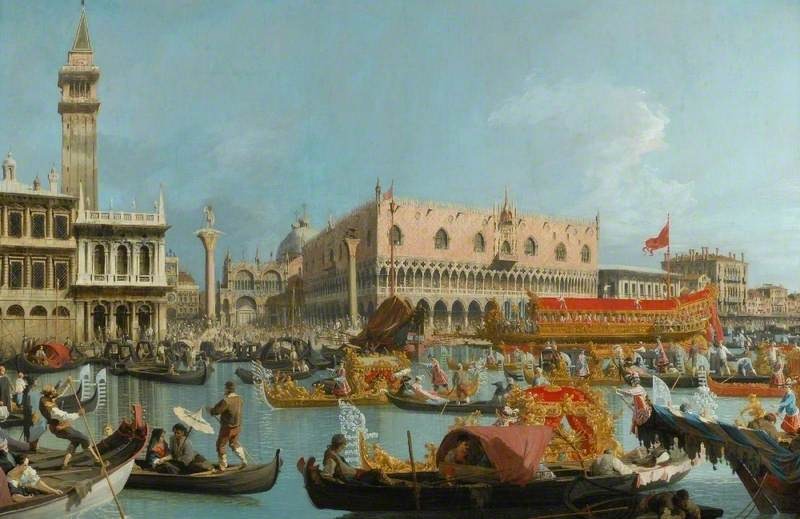Urban Life in Venice

Giovanni Antonio Canal, Return of the Bucintoro to the Molo on Ascension Day, 1732, oil on canvas (Royal Collection, Windsor).
Venice was famous for its proximity to and reliance on water, as well as the numerous waterways that formed its streets. Dubbed the Queen of the Tides and a city married to the sea, Venice was perhaps best known for its sensational music and arts, whether it be theater performances or melodic serenades in the gondolas, as well as its citizens’ pursuit of pleasure and love.1 The Venetians were sprightly and eloquent, who saw things in their true light and were permitted to travel, dress, purchase, and eat as they pleased.2 The men walked the streets without weapons, the women without a posse of servants, and the senators without attendants; even the British women who were visiting were able to explore Venice in barges without their spouses.3 Sights in Venice often included “musical sailors and gay gondoliers” whose sweet melodies and passionate recitations could be heard from all throughout the city.4 Return of the Bucintoro to the Molo on Ascension Day, a painting by artist Giovanni Antonio Canal (1697-1768) who specialized in painting Venetian vedute or views, highlights the many gondolas that serviced Venice’s waterways.
Visitors to Venice often found that the people there were more concerned with attending the theater than with worldly affairs or intellectual discussions. The Venetians attended the theaters nearly every evening from six until eleven, amusing themselves with sonatas and agreeable conversation.5 Though removed from the intellectual realm, the Venetians did have bookseller shops and coffee houses, where one could purchase books and discuss news of all subject matters. However, not all was well in the city where “every sensation is wound up to love,” as the wicked were often able to disguise themselves among churchgoers, singing psalms and receiving pious donations, and the judicial system often ruled murder cases in favor of the murderer.6
JF
_______
1 Mariana Starke, Letters from Italy, between the years 1792 and 1798, containing a view of the revolutions in that country, from the capture of Nice by the French Republic to the expulsion of Pius VI. from the ecclesiastical state: Likewise pointing out The matchless Works of Art which still embellish Pisa, Florence, Siena, Rome, Naples, Bologna, Venice, & With Instructions For the Use of Invalids and Families Who may not choose to incur the Expence attendant upon travelling with a Courier, (London, 1800), 42.
2 Louis-Antoine Caraccioli, marquis, Lucidor, or travels of a philosopher, through the various parts of Europe; Humourously describing the Manners and Customs. Interspersed with anecdotes and characters (London, 1789), 77-78.
3 Starke, Letters from Italy, 41.
4 Ibid.
5 Caraccioli, Lucidor, 76.
6 Starke, Letters from Italy, 43.